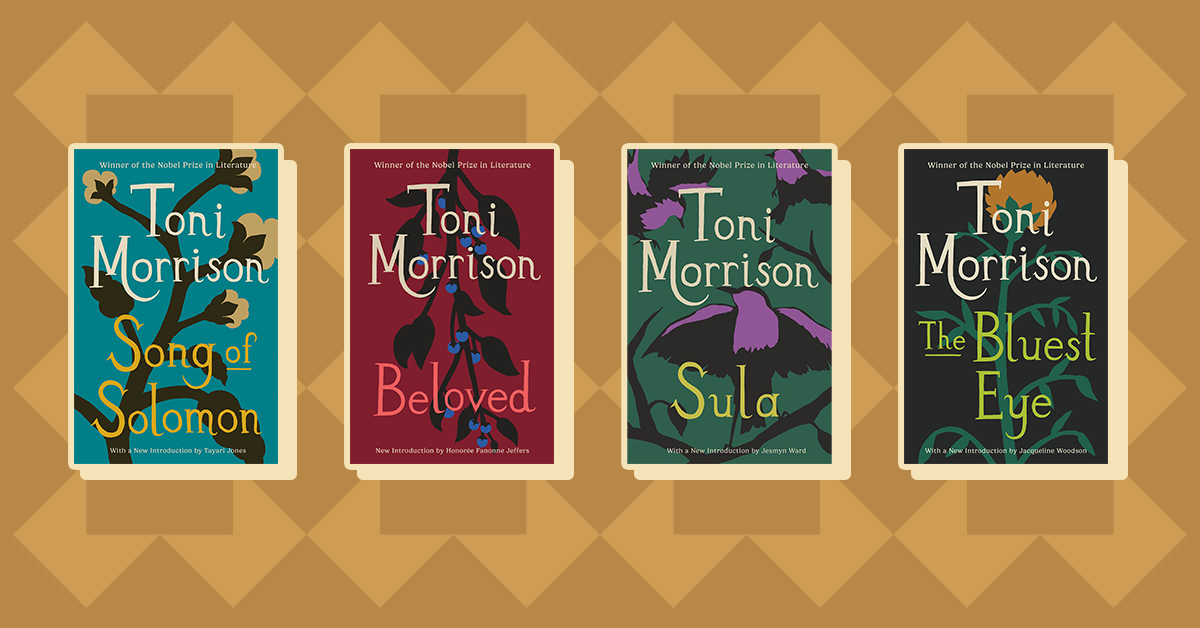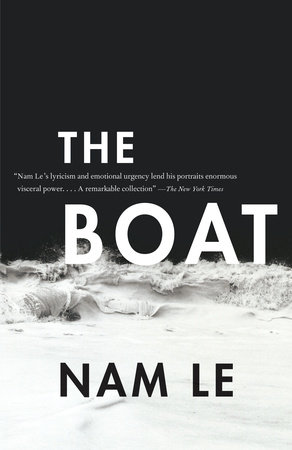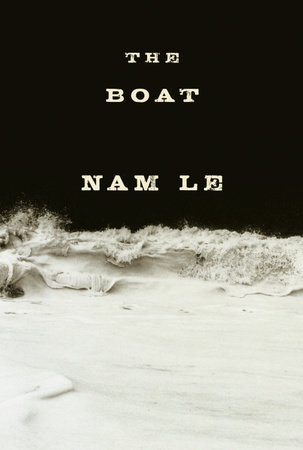The seven stories in Nam Le’s masterful collection take us across the globe, guiding us to the heart of what it means to be human. From the slums of Colombia to Iowa City and from the streets of Tehran to a foundering vessel in the South China Sea, here are thrilling versatile tales that herald the arrival of a remarkable new writer.
Related Genres
“Nam Le’s lyricism and emotional urgency lend his portraits enormous visceral power. . . . A remarkable collection.” —The New York Times
“Nam Le is extraordinary, a writer who must – who will – be heard. . . .The Boat‘s vision and its power are timeless.” —Mary Gaitskill
“Astounding. . . . A refreshingly diverse and panoramic debut.” —Los Angeles Times Book Review
“Extraordinarily accomplished and sophisticated. . . . Moving and unforgettable.” —San Francisco Chronicle
“Wonderful stories that snarl and pant across our crazed world . . . . Nam Le is a heartbreaker, not easily forgotten.” —Junot Díaz
“Lyrical . . . Powerful and assured. . . . [Le’s] kaleidoscopic world view is on display throughout the stories, which seamlessly blend cultural traditions, accents and landscapes that run from lush to barren.” —The Miami Herald
“Stunning. . . .These stories are so beautifully written and cross emotional barriers of time and place with such clear vision and strong command of language we can only wonder with awe what Nam Le will offer us next.” —The Oregonian
“A collection that takes the reader across the globe. From Iowa to Colombia to Australia and Iran, the characters in Le’s stories each shape the world around them. In each story, the protagonists create a new atmosphere. . . .While Le is a writer who seems to be interested in the issues of the world, he is also a writer interested in the young. . . . Le does not downplay the lives of his children as fiction often does when portraying younger characters but presents them with a seriousness and intelligence that is refreshing. . . . The Boat is an impressive debut from a writer with a lot more to give. A writer to be remembered.” —Marion Frisby, The Denver Post
“Powerful . . . Lyrical . . . Devastating . . . A harsh and masterful effort, each tale a clean shot through the heart, the aim true. In seven stories covering six continents and an ocean, Le delivers a powerful and assured vision that offers a clear look at his impressive talents. . . . Le is the sort of writer who taps directly into the vein of desperation and offers no shelter. He’s not for the faint of heart, but the reward for soldiering on in the toughness of his world is the welcome recognition of a voice clear and brave.” —Amy Driscoll, The Miami Herald
“Captivating . . . An uncannily mature debut [that] distills time, experience . . . There’s a streak of the naturalist in Nam Le that looks back to such writers as Emile Zola, Stephen Crane and Theodore Dreiser. . . . It is a searing portrait of survival, love and sacrifice, which seems revelatory and wise. It is [Le’s] ethnic story that transcends ethnicity.” —Robert L. Pincus, San Diego Union-Tribune
“[The Boat] takes the reader from the South China Sea to Medellin, Colombia, to Tehran and beyond–places that, in many cases, Nam Le has never visited. . . . What struck me about [‘Tehran Calling’] was how vivid the imagery of the city of Tehran appears–the Shiite Ashura procession, with the self-flagellation, the rutted roads, [he] talks about the stale fluorescent writing at the airport . . . [Nam Le] writes so convincingly about these places [he’s] never been to . . .” —Guy Raz, correspondent, All Things Considered
“Brilliant . . . The Boat will quicken your pulse and awaken every nerve in your being. For avid readers who have hungered for stories that can transport them physically, intellectually and emotionally, stories so well-structured and narrated they appear to reinvent the form itself, the literary American Idol is Nam Le. [His] dynamic prose and remarkable range of subjects and points of view defy explanation. . . . There is so much to say about Nam Le’s genius that it would take a book and even that may not be enough. With The Boat, he defeats time, hollowness and cliché with every story, earning him the right to reap sheaves, buckets, reservoirs of generous, unabashed praise.” —Denise Gess, Raleigh News & Observer
“Twenty-nine-year-old Nam Le demonstrates the aesthetic ambition and sentence-making chops of a much more experienced writer. . . . Each moment of technical brio [in the opening story] deepens the dramatization of the all-but-unspeakable power of love between parent and child. By the end, any perceptive reader will agree that the ‘world could be shattered by a small stone dropped like a single syllable.’ . . . The plot unfolds with remorseless logic, harsh beauty, and an almost unbearable tenderness that reminded me of Dubliners. [The story’s] scenes [are] exact in their details and gorgeous in their musicality . . . I’ve been telling friends about The Boat for weeks now, saying ‘This guy’s got it.’ Now I’m telling you. Pass it on.” —John Repp, Cleveland Plain Dealer
“Astonishing . . . Not yet 30, Le effortlessly gives all seven tales in The Boat a different register, structure, vocabulary and tone.. . . . The miracle of these stories is how their author, by sleight of hand and virtue of skill, puts his searching, observant voice wherever he likes.” —John Freeman, Newark Star-Ledger
“Moving . . . The opening story in Nam Le’s debut collection, The Boat, is as dazzling an introduction to a writer’s work as I’ve read. . . . Nam Le digs beneath the surface and unfailingly sees the bundles as human in these accomplished stories about the terrible reverberations of violence.” —Heller McAlpin, The Christian Science Monitor
“It is uncommon that a writer’s first book can be described as masterful, especially when the author is not yet 30 years old. But The Boat, an extraordinary collection of seven short stories by Nam Le, is truly that kind of book. . . . As complex in its depth as it is accessible in its prose. . . . These stories are so beautifully written and cross emotional barriers of time and place with such clear vision and strong command of language we can only wonder with awe what Nam Le will offer us next.” —Jim Carmin, The Oregonian
“[The stories in Nam Le’s The Boat] flout the traditional maxim ‘Write what you know,’ taking on characters as diverse as Colombian drug lords, Iranian feminists, and a New York painter who sounds a lot like Lucian Freud. All sincere works of the imagination, these stories yet bear a self-conscious riposte to conventional wisdom. . . . Mr. Le stands out from the crowd [of debut writers] because of the breadth of his research and the confidence of his imagination. He may prize the universal, but he doesn’t skimp on concrete detail. In ‘Tehran Calling,’ for example, he could have described the row between an American visitor and her Iranian friend with dialogue and a few descriptions, but instead he takes us walking on the streets, describes smells, effects of lighting, and the fine points of street wear. . . . I found ‘Hiroshima,’ the most experimental story here, also to be one of the most absorbing. . . . There are many ticklish questions to ask about fiction and its sources, and they have been asked, recently, by many writers. Mr. Le’s distinction is to ask them without once seeming other than a hardworking practitioner of quality American lit.” —Benjamin Lytal, The New York Sun
“Leering. Sepia-toned. Dark. Dark. Dark. Light. Well-crafted. Intricately cut, sanded, steamed and stained. Striking. Aggressively schizophrenic. Crayola-esque (characters). Jim Shepard-esque (range).” —Esquire (All-Adjective Reviews)
“Sensational . . . There is something thrilling in discovering a gifted new writer on the American scene. And that is what we have in Nam Le, whose short story collection, The Boat, easily will be among the significant works of fiction published this year. . . . Stories that both crackle with immediacy and sport a cool, focused tone. His characters are drawn with an old master’s depth . . . It’s not often that a work of highbrow fiction moves like a suspense novel, but that’s the kind of talent Nam Le displays. It reaffirms your faith in literature. . . . There is a spare architecture to his sentences, yet he has the ability to create complex worlds, shadowed by bleakness and heartbreak. . . . His first story alternates between playful satire and dread seriousness, showing the kind of balancing act Le can pull off. [In] ‘Cartagena,’ Le vividly sketches the cardboard cities and muddy streets of Medellin . . . The story has the hypnotic power of a Graham Greene nightmare. . . . The book’s masterpiece is ‘Halflead Bay,’ an Aussie twist on Hemingway’s Nick Adams stories. . . . It is full of rich description, an ear for native lingo and keen observations of dysfunctional family dynamics. As you read the last lines of The Boat, it is not a stretch to flash on ‘The Dead,’ the legendary final story in Joyce’s Dubliners. . . . A book filled with grace, texture and humanity.” —Larry Aydlette, The Palm Beach Post
“The characters in Nam Le’s The Boat are impossible to pigeonhole, ranging from an egomaniacal Manhattan artist to a Colombian gangster to a hard-drinking Iowa M.F.A. student. [The] standout [is] the brutal title story [which] dramatizes the plight of three Vietnamese boat people. Le’s viscerally affecting writing and bold imagination mark an exciting debut.” —Jennifer Reese, Entertainment Weekly
“Stories [that] engulf you and transport you to another time, another place–give you a window into someone else’s soul almost deeper than if it were your own. . . . Long on character, depth and emotion: you’d swear that [Nam Le] has lived in every one of those stories [that make up The Boat]. When you finish each one, you will feel as if you have read a novel, your breathing will be heavy and your heart will be pounding as you return from a deeply personal adventure that has, in some strange way, become your own. . . . The thread tying the stories together in The Boat is the dramatic humanity, the poetic language, and most of all, the idea that that depth and intensity of human emotion is expressed on every continent. We are not so different after all.” —Faye Levow, Portsmouth Herald News
“Four stars . . . The stories [in The Boat] connect across country, class and circumstance–not only through Le’s ambition to nail each milieu, but through his obsession with the ways people live in and reveal their cultures . . . Each story immerses readers in its own distant setting. The book’s success isn’t just a matter of scene-setting; it also depends on Le’s characters and his classic, coincidences-explained-later plotting. He’ll make you marvel at the web his South American hit men are caught in, and he’ll make you worry for them. . . . In a piece about an Iranian activist and the clueless white friend who comes to visit her, he writes the part of the American interloper with sympathy and aplomb. . . . Le offers real insight.” —Sophie Fels, Time Out New York
“Seven stories set around the globe–from Iowa to Tehran, Manhattan to Australia, and Colombia to Hiroshima–make up Vietnam-born Nam Le’s dynamic debut collection, The Boat, in which achingly familiar alliances converge in ingeniously unlikely places.” —Lisa Shea, Elle
“Wide-ranging, knife-sharp stories by a masterly 29-year-old. Nam Le was born in Vietnam and raised in Australia, yet his debut collection of stories, The Boat, reveals as mature and certain an American voice as just about any native-born writer twice his age. His prose evokes Philip Roth’s–sure of itself, clean, and invisibly effective. These muscular and psychologically rich narratives take place in the United States, Australia, Colombia, and in a storm-tossed boat in the South China Sea [and] contend with a startlingly wide array of characters . . . What’s notable is the structural soundness of these powerful and far-ranging pieces: Each one is built to exactly the shape, and flows in exactly the tone and language, that will suit the needs of the story. The final and longest story in the book, ‘The Boat,’ takes on the deepest issues of life, love, and death, something worthy of Conrad or James. Nam Le is a remarkably sophisticated new writer.” —Vince Passaro, O, The Oprah Magazine
“Stories rooted in war and history [that] frequently zoom in on the affairs of characters who have to live with the consequences. . . . Le uses his wonderfully flexible prose style to explore Vietnamese ethnic identity, writing workshops, and even plain old drunkenness.” —Colin Marshall, The Santa Barbara Independent
“Stories [that] are reflective of their writer: eclectic, diverse, true in their toughness and giving in their complexity. . . . Two gems [are] ‘Love and Honor and Pity and Pride and Compassion and Sacrifice,’ [which] is art at its highest form, incorporating satire, metafiction, homage, and social critique into a story about a writer and his father and the infamous My Lai Massacre, [and] the title story ‘The Boat’ [which] is filled with so much emotional truth, it borders the line with non-fiction. . . . It turned a tale into an experience and brought us that much closer to one another.” —Ky-Phong Tran, Nguoi Viet Daily News
“[Nam Le’s] personal history is as compelling and engrossing as any of his writing. . . . A debut collection of seven taut, geographically diverse stories . . . Le could be the next big thing [and] the opening story, ‘Love and Honor and Pity and Pride and Compassion and Sacrifice,’ goes a good distance to proving it.” —Robert Birnbaum, The Morning News
“So engaging, so unequivocally well done, [The Boat] is sure to appeal to any fan of good writing. From the opening tale, it’s hard not to be giddy. [‘Love and Honor and Pity and Pride and Compassion and Sacrifice’] is a brilliantly self-conscious and humorous slice of the writing life, which doubles as a poignant story about fathers and sons and family tragedies. . . . Things only get better from there. Nam Le is a chameleon of voices and points of view, leading the reader through the experiences of an older man, a disillusioned young woman, a boy on the cusp of adulthood, and a teenage girl. The Boat takes us all over the world with fantastic verisimilitude. . . . ‘Halflead Bay’ is an enviable achievement–an adolescent’s battle to find courage as his life begins to turn upside down, the story developed with perfect suspense. . . . And the title story offers urgency, poignancy and heartbreaking tragedy. As if the stories themselves weren’t enough to make The Boat a worthy summer read, the skill of the author is a spectacle to behold. He manages to avoid so many pitfalls. He doesn’t shy away from stark and disturbing images, for example, yet he doesn’t rely on the grotesque to create effective writing. The reader can sense his personal investment in the work, but the stories aren’t even close to self-indulgent. It’s enough to give a person a literary crush. Each story is dark and deep, exquisitely constructed and beautifully told. Nam Le is a studied, competent and graceful writer, and The Boat is both a contemporary treasure and a harbinger of good things to come.” —Jessica Inman, BookPage
“The protagonist of the first story in this stellar debut collection is the Vietnam-born Nam, a former lawyer from Australia trying to meet a deadline at the Iowa Writers’ Workshop when his estranged father blows into town. Will this [collection] be a bunch of autobiographical stories exemplifying ‘ethnic fiction’ (which the story actually managed, rather slyly, to dismiss)? Absolutely not–unless Le is also a 14-year-old assassin in Colombia, asked to kill a friend; a crotchety if successful painter coming to terms with a cancer diagnosis just as the daughter he’s never met prepares for her Carnegie Hall debut; a high school boy in Australia who’s achieved a modest sports victory and must face down a bully as his mother faces death; and an American woman visiting a friend in Tehran who risks her life battling the regime. Le writes rawly rigorous stories that capture entire worlds; each character is distinctive and fully fleshed out, each plot eventful as a full-length novel but artfully compressed. Highly recommended.” —Barbara Hoffert, Library Journal
“[The Boat is] set on six continents and at sea, in the twentieth and twenty-first centuries, [with] characters ranging in age from childhood through the senior years. Many [of the stories] explore the intricate loyalties and betrayals in family life: notably, ‘Love and Honor and Pity and Pride and Compassion and Sacrifice,’ in which a Vietnamese Australian émigré studying at the University of Iowa’s writers’ program experiences his father’s final brutality, and ‘Halflead Bay,’ in which a teenage boy struggles with the father and brother who rescue him from a vicious schoolmate. [The characters] are brought to life in powerful stories of love and death through a muscular yet delicate style: lyrical, often poetic, leaving the obvious unsaid and endings ambiguous. Readers will devour this book.” —Ellen Loughran, Booklist
“A breathtakingly assured collection of stories–powerful, moving, unsparingly honest–exhibiting a narrative confidence and range that is as remarkable as it is mature. A tremendous debut.” —William Boyd, author of Any Human Heart
“From a Colombian slum to the streets of Tehran, seven characters in seven stories struggle with very particular Swords of Damocles in Pushcart Prize winner Le’s accomplished debut. . . . The opening [story] features a Vietnamese character named Nam who is struggling to complete his Iowa Writer’s Workshop master’s when his father comes for a tense visit . . . The story’s ironies are masterfully controlled by Le, and reverberate through the rest of this peripatetic collection. Taken together, the stories cover a vast geographic territory and are filled with exquisitely painful and raw moments of revelation, captured in an economical style as deft as it is sure.” —Publishers Weekly (starred review)
“A polished and intense debut of astonishing range. Some of the stories border on novellas, and this allows the author more latitude to develop the complexity of his characters. The opening story is a brilliantly conceived narrative about a writer called Nam . . . When his father, a Vietnamese immigrant interrupts both Nam’s schedule and his personal life, Nam begins to fret, for he’s worried about being able to produce a story on the tight deadline he faces. He’s not interested in falling back on the ‘typical’ survival story about Vietnamese boat people, and he remembers that at an earlier time his father confessed to having witnessed the My Lai massacre as a boy of 14. This revelation leads Nam to a stunning realization about the nature of father-son relationships, and his epiphany becomes the true subject of his story. . . Ironically, and slyly, with a nod to the opening story, the final piece, which gives the book its name, is an imaginative reconstruction for what it felt like to be a boat person, to launch into a 12-day journey with no foreseeable end. Consummately self-assured.” —Kirkus Reviews
“Stellar . . . The unusually various characters in Nam Le’s excellent debut collection live between worlds. . . . The book’s seven stories are also diverse in setting and mode. Consequently, the reader . . . becomes a participant in Le’s transglobal examination of lives being lived in mental and physical border zones. Le leaps from world to world with the help of his unusually supple prose. It can shift over the course of a page from intense, detailed understatement to the workmanlike to the searingly eloquent. The textures of prose found among the stories are equally distinct. . . . In The Boat’s opening story, Le’s fictional alter ego . . . [is] drafting a story, much like the one we are reading, that simultaneously enacts, dismantles, and expands on the genre. The Boat manages to breathe similarly fresh air into the overly familiar idea of the short-story collection. The result is bracing.” —Laird Hunt, Bookforum
“From the very first page of The Boat, Nam Le’s extraordinary talent, range of vision, and moral courage make the reader sit up and take notice. By the last page, one feels a kind of fervent gratitude–rare enough these days–for having been introduced to a young writer whose mark on the literary world, so freshly made, will only grow deeper in the years to come.” —John Burnham Schwartz, author of The Commoner and Reservation Road
“Nam Le writes with a rare blend of courage and beauty. His prose has a stunning clarity that works perfectly with the constant flow of narrative surprises. Book your passage on The Boat. You will not forget the people you meet on the voyage.” —Chris Offutt, author of The Same River Twice
“The Boat is tremendous, challenging and ambitious, worthy of the same shelf that holds Dubliners and The Things They Carried–like those works, it asks to be read as a whole and taken seriously as a book. In it, storms gather but no one seems able to respond; violence leads to confusion instead of clarity; love provokes rather than answers old questions, stirring up painful longings in numb and broken souls. The book journeys across time and space, history and continents, finding a nightmare of isolation, fear, upheaval and violence. Nam Le looks into our present, and we seem to hear a prophetic voice coming to us from the future, but really this book nails our collective now, our kairos, with an urgency and relevance that feels visionary.” —Charles D’Ambrosio, author of The Dead Fish Museum
“In the first story of this fine collection, Nam Le has already demonstrated the kind of courage and directness it takes most writers years to achieve. By the last, he’s proven he can take you on a journey to almost anywhere–the slums of Colombia, the South Asian seas, the exurbs of Australia, or the art world of New York–all in vivid and at times harrowing detail. The Boat is an impressive feat, and the debut of a very talented writer.” —Adam Haslett, author of You Are Not a Stranger Here
“In these seven fierce, alluring stories, Nam Le demonstrates, to an extraordinary degree, John Donne’s claim that no man is an island. I was impressed and deeply moved by the many worlds–Iowa City, war-torn Viet Nam, rural Australia–to which this brilliant young writer transported me. A terrific book.” —Margot Livesey, author of Eva Moves the Furniture
WINNER 2009 Anisfield-Wolf Book Award
WINNER 2008 Dylan Thomas Prize
WINNER 2008 Library Journal Best Books of the Year
WINNER 2010 PEN/Malamud Award for Short Fiction
ISBN9780307388193
Published onAug 11, 2009
Published byVintage
Pages288
Dimensions5-3/16 x 8
A: Most of my life I’ve wanted to write poetry. I guess that goes for a lot of fiction writers. Through high school and university that’s basically all I concentrated on – I even persuaded my honors advisor to accept my (non-creative) thesis in verse – in rhyming couplets. We figured out a formula where a line of iambic tetrameter equalled something like 20 prose words; the poem ended up a thousand-line long critical treatise on W.H. Auden. After university I joined a law firm, then took a year off to go traveling, living off a bank loan facilitated by the firm’s letter of guarantee – which seemed, at the time, simultaneously carte blanche and soul-sucking contract. I had a year before having to return and pay off my debt. Of course, as soon as I set aside my suit and tie, I realized I never wanted to put such things on again. The solution was to write a novel. I sat down one afternoon in a café in Quito and planned out a novel. Then, over the next couple of years, I wrote it. It was 700 pages and a spectacular, multi-dimensional failure. By then I’d started at the Iowa program and, in between trying to salvage the novel, I wrote the first versions of most of the stories in The Boat.
Q: The settings of the seven stories in this collection are incredibly varied, from Iowa City to Colombia; New York City to Hiroshima; Tehran to Australia. Did you intentionally set out to write a collection in which each story was set in a different part of the world? If so why?
A: At first, I didn’t set out to write a collection at all. And when I had enough stories to entertain the idea, it seemed to me what publishers wanted – when they published stories at all – were linked stories, or thematically congruous stories, or novels-in-stories – not this sort of hodge podge. My approach was always to conceive each of these stories as completely self-contained entities. I wanted each story to contain all of the aesthetic and rhetorical evidence for its own acquittal. And because I felt – and continue to feel – that there was so much I had to learn about writing short stories – I wanted to build each story from a different blueprint, and from the ground up. So the setting might change from story to story, but so too – maybe less conspicuously – does the approach to storytelling, the deployment of structure, voice, character, plot, style, and theme.
In the end, of course, the geographical scope of these stories probably does speak to some innate wanderlust in my nature. I’ve done a fair bit of traveling myself. I was born in Vietnam, raised in Australia, currently live in the US, and have mucked around through chunks of Europe, South America and Asia. It’s not a stretch to say that the reasons why I travel and why I write/read are similar: to see other things, other places, situations and people, through other eyes. If the ultimate good in fiction lies, as I believe, in its ability to transport readers, I hope the hopscotch itinerary of these stories constitutes only part (though a crucial part) of the journey.
Q: How did you choose the locations that you did? Does the story usually dictate the setting or did you have certain places you knew you wanted to explore as the settings?
A: The story behind each story was different. A lot of it was accident, happenstance, what I was reading, thinking about, talking about, movies I was watching, memories I was dredging up. Generally speaking, it’s hard to say at what point the setting or ‘place’ of a story is thrown up on the drawing board, because part of the game is to try to orchestrate every element (setting, plot, character, style) so that they all seem intrinsic and inevitable to the story, organic to its aspirations.
Looking back now, I will say that by switching from place to place (as well as time to time) I was in some way formalizing the idea that there’s no place that’s not strange to us. Fiction makes strange even the places we think we know. Subjectively, no two neighbors live on the same street, let alone in the same city. However, fiction can also evoke our familiarity with strange things. It’s this tension I’m interested in – the artifice and agenda behind making familiar things strange, strange things familiar – and starting in a completely new place with each story allows me to play with that.
Q: Could you give some specific examples of how these stories—and their settings—came about?
A: The first story takes place in Iowa City as was required by its metafictional conceit (a main character with my name and circumstances). ‘Meeting Elise’ began as an image and an abstract idea, whereas ‘Cartagena’ began as a situation seeking a voice. Both were pretty wedded to their settings. As, obviously, was ‘Hiroshima,’ which developed almost entirely in negative relief; that is, I wanted to capture something real, relatable, human, behind a historic tragedy that’s absolutely saturated in previous expression and assumption. ‘The Boat’ took the opposite tack, seeking to flesh out an experience that’s been lacking on the historical literary record. ‘Tehran Calling’ felt, at first, like a fact-finding mission – into character as much as culture and geography – so it was natural that this heuristic sense worked itself into the bones of the story. ‘Halflead Bay’ started out as almost an ethical exercise – to explore adolescent energy and urgency without condescension, to give adolescent consciousness the same breadth and complexity as that of an adult – then evolved into a portrait of a family and town that was broader than I’d originally envisaged. Writing that story made me homesick. One thing’s for sure: all of these stories ended up some distance from their original conceptions.
Q: In each of these locations, you so capture the essence of the place—from the landscapes to the language. What was most challenging about that? Do you do any research on your settings? Have you been to most of these places?
A: I wanted to capture not the essence but an essence of these places that felt authentic. Part of this, of course, was just trying to get the details right. I think Marilynne Robinson once said that plausibility was purely a matter of aesthetics; in a much narrower sense, authenticity can be seen as just a matter of accumulating the right details. So yes, I did a fair bit of research to find the right details (and to try to weed out the wrong ones). That said, no, I haven’t been to most of the places in the stories, and even if I had, they wouldn’t have been the same places (or same historical moments) into which I inserted my characters.
In stories, of course, human environment is almost entirely linguistic. When you parse it, so-called ‘identity’ often comes down to how we articulate to each other what we think of ourselves. It’s a method both of inclusion and exclusion. And it’s incredibly sophisticated – just look at the significances encoded in slight variations in accent. To a writer, nothing taps into that vein of identity—be it corporate, cultural or individual—as deeply as language – its vocabulary, rhythms, inflections, tempo, grammar. If you can break this code, you’re in. And in fiction, the fix you get from code-breaking – the high of unstepped on access – is so much stronger, because you get to exploit the language of thought as well as speech.
Q: You were born in Vietnam but raised in Australia, and now you live in the U.S. and
Australia—where do you consider home to be? Does the question of what is home feature in THE BOAT, and if so, how?
A: That’s a good question and I don’t really have a consistent answer for it. For now, at least, I’d like to subscribe to the view that home doesn’t have to be a singular place. Part of me would like to say it’s the people – but of course it’s more than that. Here’s a case where cliché hasn’t yet snuffed out the truth for me – home is where the heart is. But the heart’s a wild, capricious, fickle organ!
As for whether the idea of ‘home’ features in the book – yes, insofar as each of the characters feels themselves displaced, some of them physically, all of them emotionally, existentially. Any character (or person in real life?) who believes they completely belong where they are is of little interest to me. Fortunately, those characters (and people) are pretty rare.
Q: Your range of central characters is as ambitious as the book’s geography. From a teenage hit man in Columbia, to an aging artist in Manhattan about to meet his estranged daughter, to mothers facing harrowing decisions, where do you find these voices?
A: As usual, I find myself subscribing to two opposing, maybe contradictory ideas: first, that we can never truly know ourselves, let alone the person next to us, let alone the person halfway across the world; and second, that only fiction enables—or fiction best enables—true empathy, that deep, clear, close inhabitation by the reader of another consciousness in another context.
It’s this idea of empathy that draws these stories to fix on different places, and situations, as well as characters – as sites of exploration for the question of what it means to be human. Also, I’m intrigued by the idea of complete immersion. In acting, in art – I’m intrigued by the paradox that inward immersion is a state configured entirely outward – that is, it’s rigged toward conveying itself to an external audience. Where do I find the voices in these stories?
Somewhere in the friction zone between the two ideas delineated above. Voice, diction, idiom – all are functions of authenticity. You audition one after another and then when something sounds right – when a voice is properly absorptive, is symbiotic with the story being told – you try to hold onto it as hard as you can.
Q: So we have to ask about the first story in this collection which has as its protagonist a young writer named Nam Le who is struggling with writer’s block while attending the Iowa Writers Workshop. What’s going on here?
A: A bunch of things, hopefully! I guess at rock bottom I was exploring this idea of ‘authenticity’ in fiction. What is it? Who determines it? How can you know it when you see it? I guess part of the provocation of this story is to ask whether – and how – we read a story differently if we think it’s based in autobiography. And whether it makes a difference if this knowledge is explicit or tacit.
All of us, I think, even writers, who are hyper-aware of the imperatives of narrative when trying to mold autobiography into fiction – the complex argy-bargy, the push and pull, the cut and paste, the bias and craft and contingency – will so easily attribute autobiographical aspects to fiction on the scantest evidence. And will then often correlate autobiography with authenticity. It’s as though we’re programmed to connect ‘text’ and ‘life’. By naming the lead character ‘Nam Le,’ by putting him in the Iowa program, I wanted to haul these assumptions into the open, to invite the reader to question them. What if the story were entirely fabricated? Or if parts of it were exaggerated, or untrue (i.e. inconsistent with the author’s autobiography)? Would that make any difference to a reader? Would it make any difference to how they read it, or responded to it? If so, why? By making some nods toward autobiography in something clearly marked as fiction (both inside and outside the story), I wanted to show up the inherent impurity of story, to disassociate authority from
presumed authenticity.
Q: You seem to be turning the idea of "ethnic literature" (i.e. that because you are Vietnamese you are somehow obligated to write about the Vietnamese experience) on its head while also playing with the idea of fiction vs. autobiography. Can you talk a little about that?
A: What is ethnic literature? Is it determined by the author or the text? Does autobiography matter? If so, why? How much? Does the intended audience matter? Is it at all defined by marketing, or positioning? How does it exist in relation to commercial fiction? To literary fiction? Does it exist as a subset or superset of these categories? Or as something entirely separate?
These are questions many writers and readers – of all ethnicities – are asking. Of course it’s tough to draw lines. It’s barely clear what the lines would be separating, especially when you consider how fiction necessarily invokes contradictory impulses: what’s most ‘authentic’ is rooted in the most contrived artifice, truth and verisimilitude are often poles apart, biography is essential yet irrelevant, sometimes you can tell a story only by not telling it (as is the case with stories like this one – that deal with atrocities, and our ideas of how to write about them).
I’m not exactly sure how to go at these questions – I struggle with them on both sides of the sharpened stick – but I do know that there’s a reticence in general discourse about ‘ethnic literature’ and I wanted in this story to go some way towards starting a conversation.
Q: And along those lines, the first story of THE BOAT opens the collection with a young man being visited by his Vietnamese father; the final, title story takes place on a fishing boat adrift in the South China Sea, full of refugees escaping from Vietnam. What is your
relationship to Vietnam as a writer? How and when did your family come to emigrate from Vietnam to Australia, and why?
A: My relationship with Vietnam is complex. For a long time I vowed I wouldn’t fall into writing ethnic stories, immigrant stories, etc. Then I realized that not only was I working against these expectations (market, self, literary, cultural), I was working against my kneejerk resistance to such expectations. I’m a boatperson. I escaped from Vietnam with my family in 1979, when I was only a few months old. In our first years in Australia, I remember my dad warning us kids that we’d be teased for being boatpeople, that we should try our best not to feel ashamed. Little did he know how enraptured I was with what I’d heard of our past: war, adventure on the high seas, pirates and tropical islands … how could you possibly be ashamed of a family story so cool?
Today, no matter what or where I write about, I feel a responsibility to the subject matter. Not so much to get it right as to do it justice. Having personal history with a subject only complicates this – but not always, nor necessarily, in bad ways. I don’t yet understand my relationship to Vietnam as a writer. This collection is a testament to the fact that I’m becoming more and more okay with that.
Q: Were any of the stories more difficult to write—and to get right—than others? Easier? Did you find yourself struggling more with the familiar—or the unfamiliar—places and people? Do you have a particular story in the collection or any single character that you feel especially close to?
A: These stories took shape over numerous drafts, over the last four years. This will sound cheesy, but every single one of these stories, as I was writing it, was the hardest story I’d ever written. Every single one felt like a failure, felt lifeless, felt fraudulent at advanced stages. And in typically perverse fashion, every single one also felt the truest. Was my favorite. I like to believe that each story yielded a breakthrough – but who knows whether those were self-manufactured!
I will say, however, that in one of the drafts of the first story, I explicitly killed off the father, which was bloody hard. I know it’s voodoo – I know about meta-fictional conceit, the presumption of fiction, the separation of author from character, etc – but try giving a character your name, many of your attributes and experiences, then killing off his dad!
Q: What is your writing process like? When do you write, where etc…
A: I can only work on one thing at a time. I’m terrible with routines. I work in spurts. I write with a combination of longhand and laptop, skewing toward the latter. Sometimes there’s a bathrobe involved. And sometimes not.
Q: Who do you read that inspires you?
A: My tastes in reading are pretty catholic and promiscuous; I’ll dally with one thing and think guiltily of another. I keep coming across those lists of books to read before I die and by now I’m too scared to do the math.
Q: So what’s next for you?
A: A novel with Thai pirates in it.
Author
Nam Le
NAM LE’s poetry has been published in Poetry, The American Poetry Review, The Paris Review, Bomb, Conjunctions, Boston Review, Lana Turner, and The Monthly. He has received major awards in America, Europe, and Australia, including the PEN/Malamud Award, the Anisfield-Wolf Book Award, the Dylan Thomas Prize, the Australian Prime Minister’s Literary Award, and the Melbourne Prize for Literature. His short story collection The Boat has been republished as a modern classic and is widely translated, anthologized, and taught. He lives in Melbourne, Australia.
Learn More about Nam LeYou May Also Like

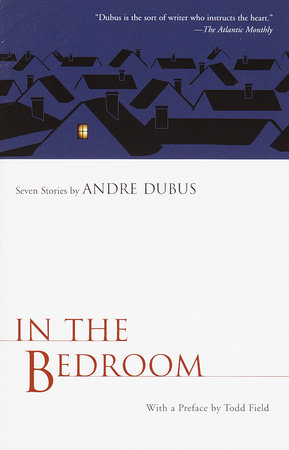
In the Bedroom

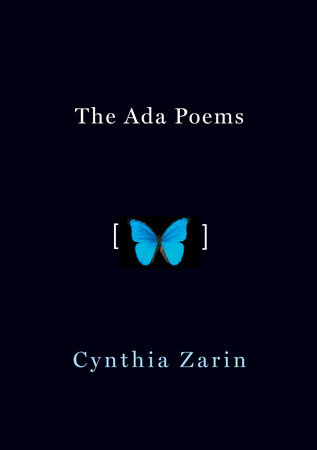
The Ada Poems

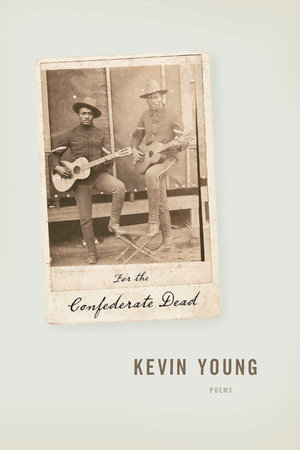
For the Confederate Dead

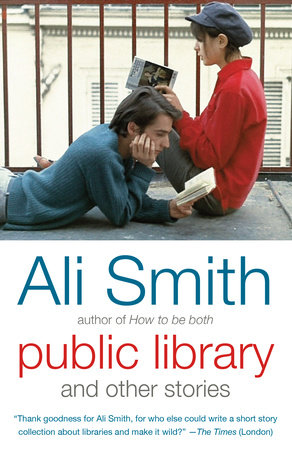
Public Library and Other Stories

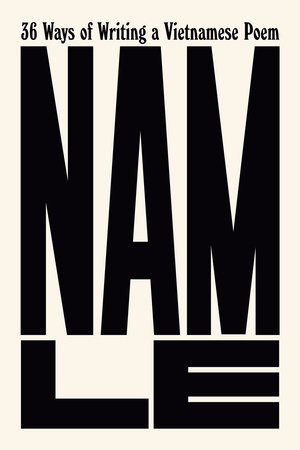
36 Ways of Writing a Vietnamese Poem

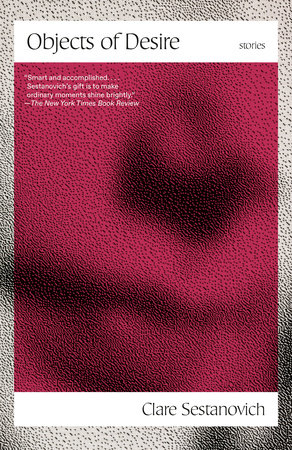
Objects of Desire


Stones

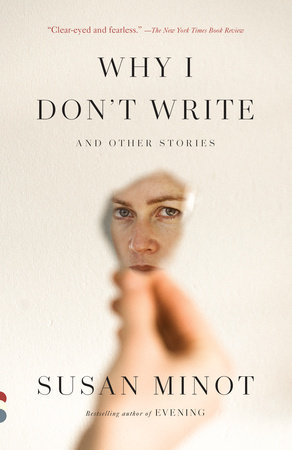
Why I Don’t Write

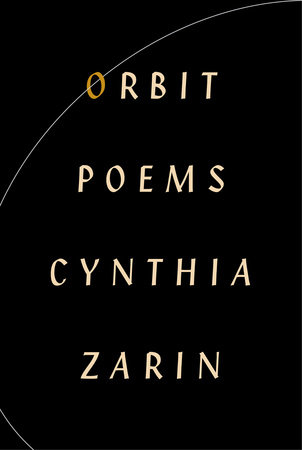
Orbit

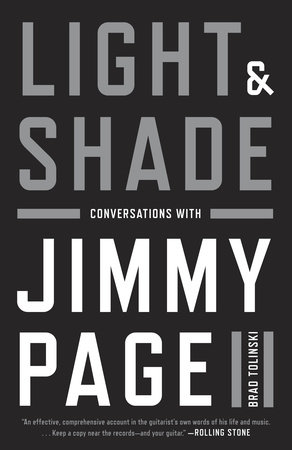
Light and Shade
Visit other sites in the Penguin Random House Network
Account Overview Recommendations Orders Account Details Email Preferences Bookshelf
